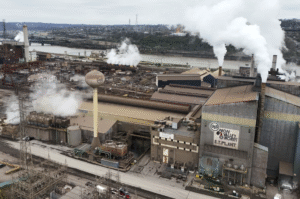Kraft Heinz announced Tuesday that it will eliminate artificial dyes from all its U.S. products by the end of 2027 and will stop launching any new products containing these additives.
The decision follows recent efforts by U.S. health officials, who urged food manufacturers to begin removing petroleum-based artificial colorings from the food supply. According to Kraft Heinz, nearly 90% of its current U.S. lineup already avoids synthetic food, drug, and cosmetic (FD&C) colors. However, the company plans to phase out the remaining artificial dyes over the next few years.
Many of the products that still contain FD&C dyes are part of the company’s beverages and desserts category, including popular brands like Crystal Light, Kool-Aid, Jell-O, and Jet-Puffed. Moving forward, Kraft Heinz will switch to natural color alternatives for these products.
“The vast majority of our products use natural or no colors, and we’ve been working to reduce synthetic dyes across our portfolio,” said Pedro Navio, President of Kraft Heinz North America. He also mentioned that the company will collaborate with third-party licensees of its brands to encourage them to make similar changes.
Kraft Heinz previously removed artificial dyes, flavors, and preservatives from its iconic macaroni and cheese in 2016, and has never used artificial dyes in its ketchup.
This move aligns with broader regulatory trends. In April, the Food and Drug Administration (FDA) announced plans to phase out synthetic dyes by 2026, primarily through voluntary cooperation from food companies. The FDA currently permits 36 food color additives, including eight synthetic dyes. However, in January, it declared that Red 3 — found in various candies, baked goods, and medications — would be banned in foods starting in 2027 due to links to cancer in lab studies.
Public health advocates have long pushed for the removal of artificial dyes, pointing to research suggesting a possible connection between synthetic colorings and behavioral issues like hyperactivity in some children. The FDA, however, maintains that most children are not affected and that the overall scientific consensus supports the safety of approved dyes.
Artificial colors remain widespread in the U.S. food industry, though other countries have adopted stricter guidelines. In Europe and Canada, synthetic dyes often require warning labels, prompting many manufacturers to favor natural alternatives. Some U.S. states — including California and West Virginia — have enacted legislation limiting the use of artificial food colorings.
As the food industry adapts, companies are turning to natural sources for vibrant hues, such as pigments derived from beets, red cabbage, purple sweet potatoes, algae, and even crushed insects. According to Sensient Colors, one of the world’s leading color and flavor producers, many American food brands are already reformulating their products to stay ahead of the coming changes.
Also Read:
RFK Jr. plans to phase out eight artificial dyes from the US food supply














